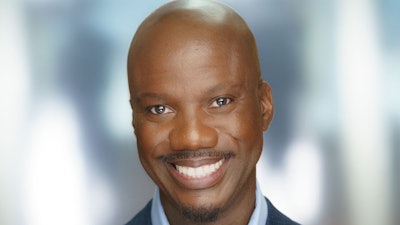It was love at first sight. I remember seeing copies of Black Issues in Higher Education in various administrators’ offices at Albany State, the historically Black university where I was an undergraduate student journalist in the mid-1990s. I didn’t have enough money at that time to become a subscriber, so I would either sit and read the magazine wherever I found it, or I would take it, read it from cover-to-cover, and then return it to its rightful owner. I was 19 when I first touched the pages of Black Issues; later this year, I will be 49. Ours is a beautiful, almost 30-year love affair.
 Dr. Shaun Harper
Dr. Shaun Harper
One feature of the magazine that was praiseworthy then and continues to be a tradition now is the way it blends higher education news with celebrations of extraordinary professional contributions. The latter plays itself out most powerfully on the front cover. Nearly 30 years later, I have come to realize that seeing Black faces on most covers is what compelled me to pick up the magazine as I awaited meetings with ASU’s president and other administrators. I love Black people – incontestably, this 40-year-old publication does and always has, too. This is why having been on the front cover of the magazine now known as Diverse: Issues in Higher Education three times means so much to me. Seeing Black people’s work showcased in this way at such a young age inspired me to do excellent, high-impact work. I am grateful to Jamal Watson and Ronald Roach (a former staff writer) for choosing to honor me with a trio of wonderful front covers.
Perhaps as impactful as the front covers were announcements I read in the “On The Move” section over the years. As an undergraduate student leader, seeing Black people transition into what sounded like amazing new jobs showed what was possible for myself and others like me. I didn’t know those people, but I saw they were mostly professionals of color. I was fortunate to have numerous possibility models at my HBCU; the magazine consistently gifted me hundreds more. Now that I think about it, this section of Black Issues was analogous to kids sitting on the front porch of their homes watching cars drive by and fantasizing about which would someday be theirs. Watson wrote an incredibly generous and exciting story about my move from the University of Pennsylvania to the University of Southern California seven years ago. I suspect it had the same inspirational effect on today’s generation of young Black scholars as those career announcements and features had on me almost three decades ago.
Ontario Wooden and I went to Albany State together; we both pledged Kappa Alpha Psi there in spring 1998. We then went on to Indiana University, the birthplace of our fraternity, to earn our master’s and doctoral degrees. The IU Higher Education and Student Affairs Program allowed Ph.D. students to propose and teach special topics courses for undergraduates. Wooden and I co-taught a class that we titled, “Black Issues in Higher Education.” Alongside books and articles from peer-reviewed academic journals, numerous pieces from the course’s namesake were required reading. The course was open to any IU undergraduate, yet every student who elected to take it was Black. Many of them now work in higher education. Were it not for Black Issues, Wooden and I wouldn’t have even thought to create such an inspirational space for Black IU students.
I wrote a nearly 70-page doctoral dissertation proposal on a topic in which I sporadically lost interest. I abruptly abandoned that topic. My advisor, other professors, and peers thought I had lost my mind because my proposal was just a mere draft or two away from a successful defense. One day, my Black Issues arrived in the mail. The cover story was about the status of Black male students in U.S. higher education. It had a profound impact on my research trajectory. As I read the compelling, incredibly alarming article, I didn’t see myself, my fraternity brothers, and several of the Black men I was mentoring at IU at the time represented. Inasmuch as it was important to document the ways higher education failed Black undergraduate men at that time (and still does), I felt it was just as important to pursue insights into how some of them managed to succeed, despite the odds stacked against them. That became my new dissertation topic. It was the precursor to my National Black Male College Achievement Study. I never would’ve made this pivot had I not read that lifechanging magazine article.
People now call me an expert on higher education broadly and on Black issues specifically. It’s not lost on me that the Diverse editors and staff have treated me as such, even before I really was. I earned my Ph.D. in May 2003. I was first quoted in a Diverse story just under three years later. I’ve since been quoted or mentioned every year in its print and online articles. Having been named in 64 articles (maybe a handful more) makes me one of the magazine’s most trusted go-to sources. I don’t mention this to be self-aggrandizing. Instead, doing so allows me to quantify the number of times that someone on the Diverse staff thought enough of me – a gay Black man – to treat me like an expert.
On this, its 40th anniversary, I publicly salute, applaud, and appreciate this magazine, its founders, and every person who’s worked on its staff for the monumental ways they’ve influenced me as a Black teacher, researcher, journalist, and higher education leader. I’ll forever remain deeply in love with Diverse.
Dr. Shaun Harper is University Professor; Provost Professor of Education and Business; Clifford and Betty Allen Chair in Urban Leadership; and USC Race and Equity Center Founder and Executive Director.






















